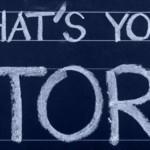
Irma Kunnari, Jaana Torseke & Marja Laurikainen
In higher education, innovative assessment practices need to cover the whole path of professional growth and provide students meaningful ways to demonstrate their competences. Digital portfolios can operate both as engaging work spaces for students’ learning, and showcases of personal professional competences. How to make this happen and how to engage students? In this article, we discuss the rationales of using ePortfolios and utilize the perspectives from ten bachelor students on how to improve the practices to trigger the students’ ePortfolio creation.
Developing competences in Bachelor education
At the universities of applied sciences in Finland, the goal of the Bachelor-level education is to provide students with relevant competences to be able to work as an expert in the labor market. Development of expertise needs both theoretical and practical knowledge, as well as socio-cultural and self-regulative knowledge (Tynjälä 2010). Accordingly, the concept of competence can be understood to consist of knowing, acting and being (Barnett and Coate 2005; Coate 2009), so the aim of learning in Bachelor-level education is not just theoretical knowledge of the discipline (knowing), or skills that students are expected to achieve (acting and doing), but also refers to the personal growth of expertise (being). In the learning processes the importance of being and becoming a professional is highlighted, as the knowledge and skills can expire in the rapid changes in the world, but the ‘being’ is more related to lifelong learning skills. Besides that, there is a growing tendency that employers want to recruit persons with right kind of personal characteristics, not just somebody with a certain qualification or a degree. To be able to cultivate these kind of characteristics in students, we need new methods in guiding and assessing competence development in higher education. Further, we need students to develop ownership of their learning and assessment processes to fully capture all the elements of competence.
Our common international project, Empowering Eportfolio Process (EEP), seeks to develop innovative assessment and guidance practices, especially by utilizing digital tools that can be used as ePortfolios. In our collectively created definition by project partners, “ePortfolios are student-owned digital working and learning spaces for collecting, creating, sharing, collaborating, reflecting learning and competences, as well as storing assessment and evaluation. They are platforms for students to follow and be engaged in their personal and career development, and actively interact with learning communities and different stakeholders of the learning process.” (Kunnari & Laurikainen 2017, 7) Digital portfolio can be used in dual meaning, as a workspace for the learning process that makes learning and developing more transparent and inspiring, and as a showcase being the place where one collects all evidence/artifacts of skills and competences (Barrett 2010). Firstly, as a workspace, digital portfolios can be used during the learning process to create spaces for interaction and feedback, as well as self-assessment and peer assessment. With digital tools, assessment cannot just be assessment of learning or assessment for learning, but also assessment as learning. In practice, this means that digital tools are used in self and peer assessing, giving feedback, co-creating evidences of competences in shared platforms and utilizing different digital applications for pictures, videos and voice recordings. All these activities can increase students’ feeling of competence, relatedness and autonomy, which are fundamental for creating motivation and wellbeing in learning (Kunnari & Lipponen 2010; Ryan & Deci 2000). Secondly, as a showcase, digital tools are needed to document students’ learning outcomes and demonstrate their personal and professional competences in multimodal form. In current work life, it is important to have a digital professional profile, which gives professional recognition and a deeper understanding of a person.
However, it is evident that students and teachers need new kinds of digital competences to be able to achieve the above-mentioned goals for the digital portfolio work. According to Ilomäki, Paavola, Lakkala and Kantosalo (2016) “Digital competence consists of the skills and practices required to use new technologies in a meaningful way and as a tool for learning, working and leisure time, understanding the essential phenomena of digital technologies in society as well as in one’s own life, and the motivation to participate in the digital world as an active and responsible actor.” In our EEP project, the development of digital competence is also defined as a goal, as it is tightly connected to the empowerment in the ePortfolio creation.
In this article, we discuss the triggering aspects from the students’ point of view of how the use of ePortfolios can be strengthened in higher education. We analyze the reflections of the focus group, which consisted of students from one degree program in Häme University of Applied Sciences (HAMK). The focus group does not represent all the students or degree programs in HAMK. However, it is a sample that demonstrates what kind of information needs to be considered when ePortfolios are planned to be implemented the first time as a fundamental part of inspiring and engaging the competence development process.
Strategic principles in HAMK to support professional growth of students
Biggs and Tang (2011) highlight the idea of constructive alignment, which means that pedagogical practices need to be aligned with the targeted competences in order to achieve quality of learning. The new strategic principles of Häme University of Applied Sciences (HAMK 2020) aim to achieve this alignment. On one hand, the new strategy puts students in the center of all activities which means that student centered pedagogical practices are emphasized, e.g. creating individual study paths that take into account the individual starting points of students. Furthermore, the new pedagogical guidelines of HAMK ensure that the guidance of professional growth begins from the very beginning of the studies and proceeds continuously until graduation. During this guidance process, students are encouraged to direct their personal growth as a professional and document their main personal learning outcomes to be utilized in their future professional life.
On the other hand, the new strategy aims to create a caring approach for learning and developing where digitalization has a very central part by offering new tools for collaboration and sharing in the learning community. In addition, it is highlighted that learning activities need to be connected to real life environments, which means that the work life representatives can participate in learning processes and the world of work can offer authentic work based problems and cases for the students to solve as part of their learning. Empowering the ePortfolio process can help in meeting all these strategic principles. The digital portfolio can be a tool for keeping the student in the center, because the idea is that students “own” the process and the products. Students themselves have the ownership of creating their portfolio individually, collaboratively and networking with the world of work.
Developing the use of ePortfolios in HAMK bachelor programs
In HAMK, during 2014 there was an extensive change process related to curricula. The bachelor education curricula were restructured to consist of broad and integrated competence based modules, instead of traditional disciplines. In addition, teachers were organized to work in teams, and students’ peer learning, authentic learning assignments in real world settings and digitalization in learning were emphasized. In this phase, the use of digital portfolios was introduced to all teachers and degree programs as a tool for guidance and assessment, and to students as a tool for creating their professional digital profiles. The idea of using portfolios in student centered learning is not new, this is the case also in HAMK. Depending on the degree program or the teachers responsible for the guidance, portfolios have been used to collect and document personal learning outcomes, or even as showcases (e.g. in design). However, the development of the digital portfolio process has not been very rapid nor systematic, but it has been isolated to single entities inside the studies. Thus, EEP project was created to support and develop the digital portfolio process to cover the different models of studies and different degree programs in HAMK.
In the EEP project we want to formulate guidelines that can be used in the entire HAMK, thus we collected points of view from the focus group that consisted of full time bachelor students that did not have extensive experience in using ePortfolios. In this article, our aim is to discuss students’ thoughts and ideas about the key elements to build an engaging ePortfolio process from the beginning of the studies until the graduation and beyond.
Bachelor students’ focus group
This article concentrates on the stage where the use of ePortfolios is not yet fully established but emerging. Therefore, our focus group is ten second year Bachelor-level students from altogether thirty students in HAMK’s Sustainable Development degree program. They have utilized various digital tools[1] in their studies so far but have not used them in the comprehensive portfolio type of setting. Although, three of the students described currently using a “light” digital portfolio for tutoring purposes. Nonetheless, the group as a whole had only received some very basic blogging instruction for the purpose of a learning diary during their second study year. All the other possible ePortfolio work has been the initiative of the students themselves and not guided by the teachers.
These ten students answered a questionnaire during a regular guidance session with their tutor teacher. The questionnaire consisted of descriptions of IT skills and other competences related to ePortfolio work, the respondents’ understanding and ideas of the benefits and challenges of ePortfolios, as well as what kind of support would help and motivate during the ePortfolio process. In addition, they were asked to voice their opinion of ePortfolios as an assessment tool, as well as a place where to share their work, collaborate and network with peers and others.
The meaningfulness and benefits of ePortfolios for the students
The reflections of the focus group affirm Barrett’s (2010) dual meaning of ePortfolios as workspaces and as showcases. In general, the focus group understood ePortfolios more as a workspace but over half of the students wanted to see more practical, real-life arguments for the use of ePortfolios. They mentioned future job seeking as one major application area to explore but expressed the need for support in doing it. In addition, from the reflections of the focus group, it is evident that the definition or understanding of ePortfolio is not so clear to everyone. Some of the students do not see that an ePortfolio can be formed from, and with, different kinds of digital tools, applications and environments, or a combination of these: “I have kept a regular blog. Is it considered a portfolio? It needs planning, commitment and openness.” The students are more easily associating CVs, web pages and LinkedIn-profiles with digital portfolios. However, there seems to be some confusion about what is meant by the term. Nevertheless, all the responses show a positive attitude towards ePortfolios: “I have never thought of a portfolio in an electronic form, but it sounds useful…my own skills would be better highlighted and I could distinguish myself from the crowd.”
Using digital portfolios as a workspace came up often in the reflections of students. The focus group was unanimous in the understanding that an ePortfolio would handily “keep everything in one place” and would be easy to share with others. Further, a few students mention the ease of self-reflection, personal development and reinforcement of learning through an ePortfolio as potentially desirable outcomes: “Well, it sounds like this could help me remember the important things in our study modules.” Furthermore, ePortfolios can make the skills and competences of the students visible for their teachers and thus, can be functional tools for assessment: “I think you can demonstrate your know-how in a multifaceted way with the help of an ePortfolio. It could also work well as an assessment tool.” More than half of the focus group gave positive indications on the matter saying how they then could obtain direct, timely and individualized feedback through ePortfolio work. However, some of the students raised concerns about the fairness of the assessment because the ePortfolios differ from person to person to reflect the personality of its creator. In addition, the students were questioning if the total course grade could be given based on the assessment of merely ePortfolios, and one of them suggested that only a pass/fail scale would be used with ePortfolios. Nonetheless, these challenges in assessment can be avoided by using a transparent and clear criteria description and relying on the best teacher practices. After all, ePortfolios can capture more elements of students’ competences when the individual’s personal and professional growth (being) is documented systematically in one place.
The students did not reflect ePortfolio as a showcase so often. This might be because they were second year students and more concentrating on studying, not yet on finding a job. However, some of the students understood the benefits of ePortfolios as showcases: “A visually pleasing and modern ePortfolio creates more interest than black and white essays and writings.” According to these reflections, it seems that there is a need to emphasize the meaningfulness of digital showcase for the students. Making competences transparent and visible in a mere CV is challenging but if it is supported by various other means, e.g. blogs and other digital skills demonstrations, it can give the employer a fuller understanding of the person and makes it easier for them to match the requirements of the work and the competences of potential future workers.
The skills and support students need in ePortfolio creation
According to our focus group, various skills are needed when students start creating their ePortfolios. Basic IT skills and digital competences are essential, and more advanced skills may be needed depending on the digital tools/applications/environments the students choose to use. Needless to say that the multimodality in ePortfolios (the use of audio, images and videos) makes them more interesting and visual, thus, most of the students pointed out that visual skills are equally as important as IT skills. In addition, good writing skills, critical thinking and creativity assist the creation of relevant and interesting content.
The focus group raised the need for support and guidance when starting to create content for ePortfolios, as well as alongside the whole ePortfolio process: “…individualized help in getting started and not just one time but continuously so that it all starts off right.” Indeed, a teacher’s role in guiding and supporting the students in the ePortfolio process is essential. Teachers need to engage and empower the students to their learning and assessment processes, and to inspire the students to capture and highlight their competences within the ePortfolio: “When the teacher is committed, willing to help and motivating, it helps me to commit to a task.”
In addition, the focus group mentioned the collaboration with the surrounding community (i.e. peers) as a vital part in successful ePortfolio creation. Some of the students saw peer pressure as a positive motivator, and most of them considered peer feedback valuable and desirable. All and all, the sharing of digital portfolios and individuals’ ideas, materials and experiences was seen as a way to increase professional dialogue between peers, and with others in the learning community. Further, the shared digital portfolios were seen to upgrade professional recognition. However, one student reminded that the student should also have the option and right for privacy if s/he so chooses. In this context, we could separate the purpose of ePortfolios – the workspaces can be mostly private or shared with a limited group of people and showcases can be more public to make the skills and competences visible to a wider audience.
On the other hand, the whole focus group stated strongly that ePortfolios should be a mandatory part of the curriculum: “Make it a part of curriculum and allocate hours for it.” They also suggested that if it was used as an assessment tool, it would ultimately become a motivational trigger for the students to start creating their own digital portfolios. In addition, the focus group recommended that the teachers should encourage the students in creating and using ePortfolios and provide them frequent reminders and useful hints. One major concern that half of the students saw as a potential obstacle was time management, i.e. how to find the time and motivation to keep the ePortfolio continuously updated.
Regarding the digital platform choices, all the students mentioned user friendliness as the most important feature of the ePortfolio. A few of the students expressed their concerns about how to choose the relevant platform for the years to come in this rapidly changing digital era. It is important that the teachers introduce different kinds of tools, applications and environments for ePortfolios but do not limit the use to some single tool/app/environment. If the students choose the platform themselves, they have more ownership of their ePortfolio both during their studies and after their studies. However, it is important to note, that using ePortfolios should not be seen as environment or tool driven. In fact, there are various digital tools and platforms that are equally functioning. Instead, focus should be on the process. ePortfolio practices should be improved to become more engaging and empowering for the students, and easily manageable for the teachers. The guidance and assessment in the e-portfolio process should become efficient and integrated into education and the everyday processes of the organizations, while students should be also involved. (Kunnari et. al. 2017, 50). The teachers need to guide the process in a way that the students carefully consider the choice of learning environments and web tools so that the updating and lifelong learning continuum can be ensured.
Conclusions
Digital portfolios can help you to understand who you are becoming in the process of professional growth. When ePortfolios are used systematically as a fundamental part of BA-education, they can improve the alignment between targeted competences and assessment practices. From students’ reflections, we can see clearly that ePortfolios as a workspace can operate as platforms for empowering interaction between peers and teachers. In these cases the feeling of relatedness, as a fundamental part of motivation creation (e.g. Ryan & Deci 2000) can work as a trigger for students. When reflecting your developing competences together with your peers, you can recognize your personal strengths and characteristics, and this can enhance your motivation to make them even more transparent.
The focus group of this article showed positive attitudes towards ePortfolio creation, in which the trigger can be the inspiration to participate in assessment process in a new way. Ideally, when students can systematically start creating their own ePortfolios from the onset of their studies, they also build their autonomy by creating their own space and ownership of their own learning. The feeling of autonomy is essential in empowerment and as a teacher you can organize learning moments for students to cultivate that (e.g. Reeve & Jang 2006). In this way, the seed for lifelong learning is being sown.
Teachers need to be able to change their traditional practices in assessment and work together with other teachers to create comprehensive support for students. The teacher’s role in the ePortfolio process is to guide, justify, inspire and support as well as to give appropriate feedback so that students are triggered to demonstrate all the elements of competence: “knowing”, “doing” and “being” in a meaningful way. This brings out the development of students’ professional growth and the concept of competences becomes fulfilled for each student. Besides this, the development of professional expertise is not limited into the school context, and students need to learn to make themselves recognized as professionals, as a part of professional networks. Finally, the students need to have the understanding of the benefits of ePortfolio and how it supports their lifelong learning as well as study and career opportunities in the future world.
1 E.g. Skype for Business, WhatsApp and Cisco WebEx for independent communication between the teams as well as for communication with their teacher; MS OneDrive, Google Drive, YouTube, Adobe Connect, Padlet and blogging for the assignments, file sharing and other tasks.

This article was produced in the Erasmus+ (KA2 action) funded project “Empowering Eportfolio Process (EEP)”. The beneficiary in the project is Häme University of Applied Sciences (FI) and the partners are VIA University College (DK), Katholieke Universiteit KU Leuven (BE), University College Leuven-Limburg (BE), Polytechnic Institute of Setúbal (PT) and Marino Institute of Education (IE). The project was implementated during 1.9.2016–30.11.2018.
Authors

Irma Kunnari, Principal Lecturer, M.Ed, PhD Fellow in educational psychology, School of Professional Teacher Education of the Häme University of Applied Sciences

Jaana Torseke, Student Teacher at Häme University of Applied Sciences, School of Professional Teacher Education, Finland

Marja Laurikainen, Education Development Specialist (Global Education), MBA, School of Professional Teacher Education of the Häme University of Applied Sciences
References
Barnett, R. (2009). Knowing and Becoming in the Higher Education Curriculum. In Studies in Higher Education, 34 (4), 429–440.
Barnett, R., & K. Coate. (2005). Engaging the Curriculum in Higher Education. Berkshire: McGraw-Hill Education.
Barrett, H. (2010). Balancing the Two Faces of ePortfolios. In Educação, Formação & Tecnologias, 3 (1), 6–14. Retrieved 15 December 2017 from http://eft.educom.pt/index.php/eft/article/viewFile/161/102
Biggs, J. & Tang, C. (2011). Teaching for quality learning at university. 4th Edition. Berkshire: McGraw-Hill/Open University Press.
Ilomäki, L., Paavola, S., Lakkala, M., & Kantosalo, A. (2016). Digital competence – an emergent boundary concept for policy and educational research. In Education and Information Technologies, 21(3), 655–679.
Kunnari, I. & Laurikainen, M. (eds.) (2017). Collection of Engaging practices on ePortfolio Process – Publication of the Empowering Eportfolio Process project. Retrieved 15 December 2017 from https://drive.google.com/file/d/0BxEnFq7yUumMUGV2V2VxVmNaNFU/view
Kunnari, I. & Lipponen, L. (2010). Building teacher-student relationship for wellbeing. In Lifelong Learning in Europe 2, 2010.
Reeve, J. & Jang, H. (2006). What teachers say and do to support students’ autonomy during a learning activity. In Journal of Educational Psychology. 98(1), 209–218.
Ryan, R.M. & Deci, E.L. (2000). Self-determination theory and the facilitation of intrinsic motivation, social development, and well-being. In American Psychologist, 55, 68–78.
Tynjälä, P. (2010). Pedagogy for professional expertise development. In K. Collin, S. Paloniemi, H. Rasku-Puttonen, & P. Tynjälä (eds.) Creativity, learning and professional expertise: The perspectives of education and working life, 79–95. Helsinki: WSOY.





